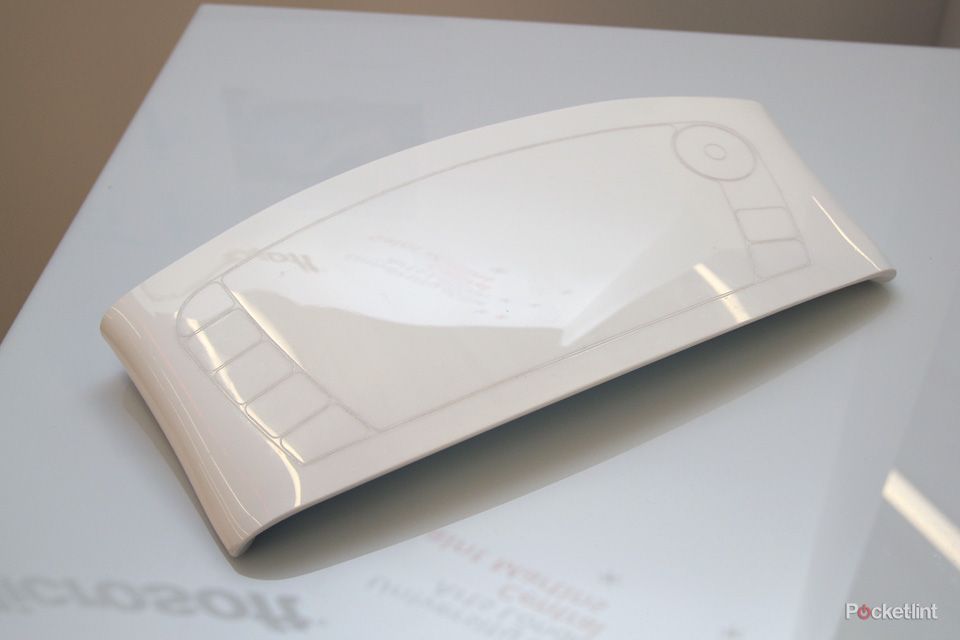An interesting flexible keyboard, called KeyFlex, was recognised on Wednesday night as the best design in a Central Saint Martins Masters course, supported by Microsoft.
Microsoft partnered with the London art and design college to support its International MA Industrial Design course. The aim was to explore "the world of input", as Ellie Richardson, hardware product manager at Microsoft, explained while introducing the showcase of student designs.
"It has been a fascinating experience to see students who hail from a diverse mix of backgrounds and nationalities developing fresh insights into the world of man/machine interaction," added Scott Smith, of the Microsoft hardware user experience team and also the judge of the project.
We had a look at the shortlisted students' concepts and picked some of our favourites.
KeyFlex
The winner, and recipient of the Young Designer of the Year Award, was Victor Johansson, from Sweden, with his KeyFlex keyboard. The concept of the KeyFlex is to take keyboard interaction and make it more dynamic for the sorts of social media activities that keyboards currently don't do particularly well.
As Johansson explained to us, the KeyFlex was designed for the "non-cursor environment, like Windows 8". Johansson went on to detail that in his opinion the current gesture approach from something like Kinect was "a passing phase" and that people didn't really want to talk to their TV.

The KeyFlex adds bend, twist and squeeze functions into an ergonomic detached keyboard design. You'd be able to twist to scroll up and down menus or squeeze to select, as well as easily programming in functions such as "share" or Like for social media use, via a squeeze action.
Although the sample, pictured, is just a concept model, there was a basic working model on display too, showing some of the controls in action. Johansson told us that he had wanted to create something "simple, delightful and very easy to use".
Ambient Game Capsule
Alexandra Sidorenko's Ambient Game Capsule is interesting because it builds on technologies that are already available, so would be very easy to make in to a reality.
The device is designed to extend the environment for gamers, creating an "emotional sphere". Sidorenko explained that gamers she had spoken to suggested more could be done to increase immersion in a game by moving some of the effect off the display and projecting it into the room around you.

This sounds a lot like Philips' Ambilight technology that has been in the company's televisions for several years. But there is a key difference.
Rather than just using coloured light to extend the display, the idea is to create movement that mirrors that of the game. For example, if you were in a driving game, moving light and colour in your peripheral vision would add the sense of speed and the same could be done for movement in-game.
Bendy-Cam
Martyna Bielecka's Bendy-Cam camera concept is probably a little far off at the moment, being based around a flexible display that pays out from the handles as you pull them apart. When closed it would be compact enough to slip into a pocket, expanding as needed when it came to use.

This would allow you do change the aspect of the shot by expanding the screen, or closing it up to give you easy access to the touch interface for control. Flexible displays, or even OLED wallpaper, are things we've been talking about for a while, so that side of things is perhaps within the realms of reality.
Bielecka explained that she first envisaged that the rear of the same display panel would effectively be the capture medium. Of course, we suggested that a pair of cameras in the orange handles could be made to work today. All you'd need then was 3D capability in that flexible display and you're be looking in to the future.
Digipost
The future isn't always about replacing technologies we know and love and the Digipost digital note from Yuhan Wan tackles this problem. The concept aims to let you write notes, but capture a digital copy thanks to a pressure sensitive surface beneath the paper.

It's a simple enough idea and we can see how this could be very practical for notes about the house or workplace. Perhaps you could add some assignable shortcuts at the bottom, so you could tick the name of a person or application to share a note with, letting you leave a note to say you'd gone out shopping and have that note beamed to the phone of your housemate.
It sounds a bit like Livescribe, which records what you write, so you have a paper copy and a digital copy of your notes and is certainly within the realms of reality.

